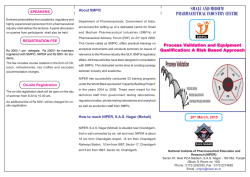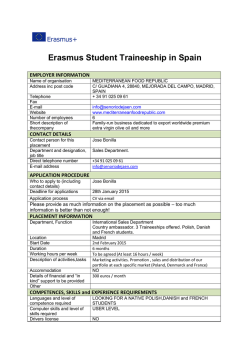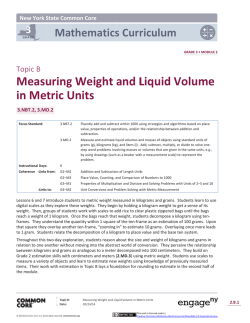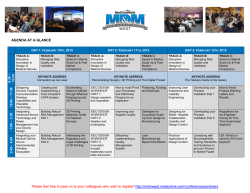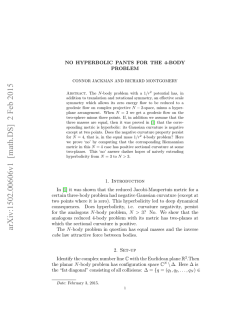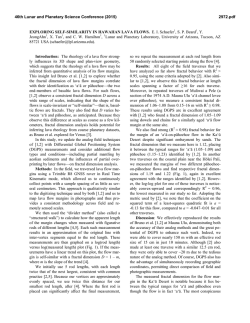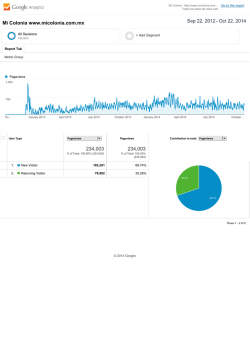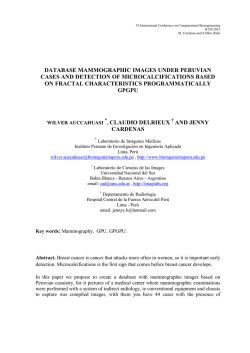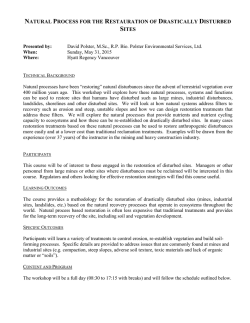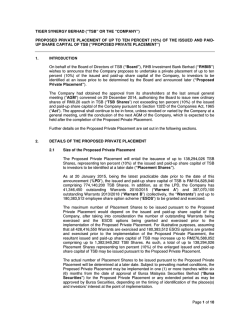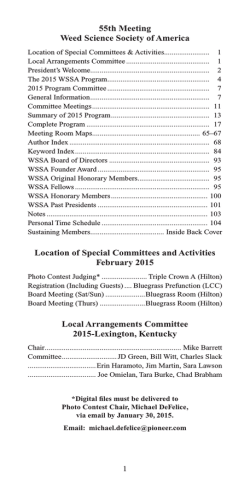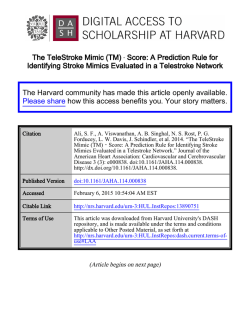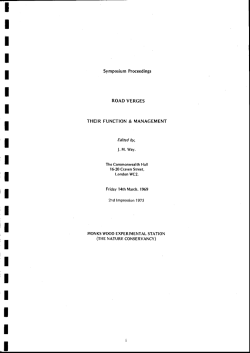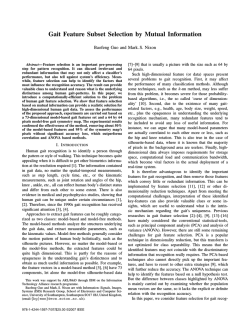
Missie en Visie TU Delft
Automatic generation of plant distributions for existing and future areas using spatial data P5 presentation - Benny Onrust Challenge the future 1 Content • • • • Introduction and objective Plant placement algorithm Tests and validation Conclusions and future work Challenge the future 2 Content • • • • Introduction and objective Plant placement algorithm Tests and validation Conclusions and future work Challenge the future 3 Introduction • Generation of plant distributions. Why? 3d visualizations Challenge the future 4 What is a plant distribution? • Point distribution • Plant types • Patterns Challenge the future 5 What are the problems? (1/2) • Current techniques are limited only detection large plants Challenge the future 6 What are the problems? (2/2) • How to obtain data for future areas? Challenge the future 7 Introduction: objective • Generation of realistic plant distributions for both existing and future areas • This includes small and large plants • Method should work for different environments and data • End product realistic plant distribution Challenge the future 8 Content • • • • Introduction and objective Plant placement algorithm Tests and validation Conclusions and future work Challenge the future 9 Overview of the algorithm The algorithm has to deal with two main problems: • Where is each plant located in the environment? Point generation • What are the plant types? Point classification But, what kind of data can be used? Challenge the future 10 Input of the algorithm • Point generation • Data about vegetation presence • Point classification • Data about composition/coverage • Data about the patterns Challenge the future 11 Input (1/3): Vegetation presence • Where is vegetation? Challenge the future 12 Input (2/3):Composition/Coverage • Where is each plant type located? Challenge the future 13 Input (3/3): Patterns • Shape metrics Defines the shape of the patterns for a plant type Challenge the future 14 Point generation • How to translate the input data to point positions? • Two-step process • Determine the presence of vegetation • Generate possible points • It is possible to combine the different data sources • Point data and maps Challenge the future 15 Point generation (1/2) • First, where is vegetation growing? Challenge the future 16 Point generation (2/2) • Poisson Disk Distribution with Wang Tiling • Generate points efficiently with a minimal distance to each other • Possible plant locations Challenge the future 17 Point classification • Now we have a large point set with no information about their plant types. • Use the composition and shape metric data. • Three-step process: • Connect composition/shape metric data to each point • Transform shape metric data to fractal values • Classify points using composition data and fractal values Challenge the future 18 Point classification (1/3): Connect composition and shape metric data • Combination of different sources is possible by taking minimum value Challenge the future 19 Point classification (2/3): Fractals • Shape metrics are transformed to fractals • Fractals are able to represent different kinds of patterns for plants • Plant patterns are fractal in nature Shape metric value .4 Shape metric value .55 Shape metric value .8 Challenge the future 20 Point classification (3/3): Classification process • How can we generate plant types for each point with this data? • Demonstrated with example containing three plant types • Coverage A: 40%, coverage B: 50%, coverage C: 10% Challenge the future 21 Step 1: plant type A • 40% coverage Challenge the future 22 Step 1: plant type A • 40% coverage Challenge the future 23 Step 1: plant type B • 50% coverage Challenge the future 24 Step 1: plant type B • 50% coverage Challenge the future 25 Step 1: plant type C • 10% coverage Challenge the future 26 Step 1: plant type C • 10% coverage Challenge the future 27 Step 1: Overlaps Challenge the future 28 Step 2: Conflicts Challenge the future 29 Step 3: Solve conflicts Challenge the future 30 Step 4: Fill in remaining points Challenge the future 31 Extensions • Existing point data • Different plant sizes (groundcover plants vs trees) • Non-static coverage • Non-static shape metrices Challenge the future 32 Content • • • • Introduction and objective Plant placement algorithm Tests and validation Conclusions and future work Challenge the future 33 Tests and validation • Salt marshes • Two areas: Existing and future area • Three cases • Validation by expert and statistics Challenge the future 34 Existing area: Paulinapolder • Two cases: with and without Land Cover Classification data (LCC) Challenge the future 35 Paulinapolder without LCC data Challenge the future 36 Validation by expert: Good Challenge the future 37 Validation by expert: Bad Challenge the future 38 Paulinapolder with LCC data Challenge the future 39 Validation: LCC Challenge the future 40 Future area: ecological model-based marsh • Coverage map only used to determine where vegetation grows • Compositions based on height statistics Challenge the future 41 Ecological model-based salt marsh result Challenge the future 42 Overview of the validation • Paulinapolder without LCC data Realistic • Paulinapolder with LCC data Not realistic • Ecological model-based Realistic • Also performed statistical validation correct • Additional data is required for certain plant types • LCC data requires additional processing Challenge the future 43 Content • • • • Introduction and objective Plant placement algorithm Tests and validation Conclusions and future work Challenge the future 44 Conclusions • Experiments have shown that this method is able to generate realistic plant distribution for small plants and future areas • Method is not limited to a certain set of spatial data or areas • Correctly maps spatial data • Method does not replace current geo-related plant detection techniques, because the results of these techniques can be used input for the algorithm Challenge the future 45 Future work • Tests using different environments • Improvements in the algorithm • Test with detection techniques • 3D visualization (in-progress) • Demo Challenge the future 46 Thank you for your attention! Challenge the future 47
© Copyright 2025
